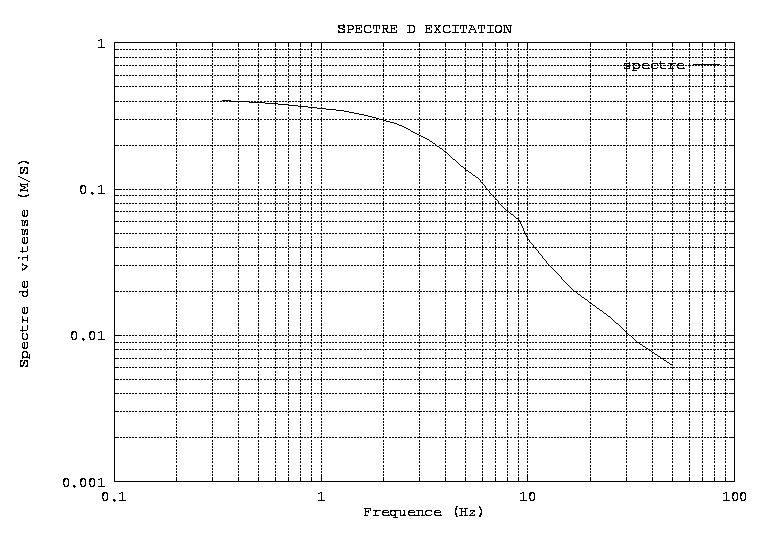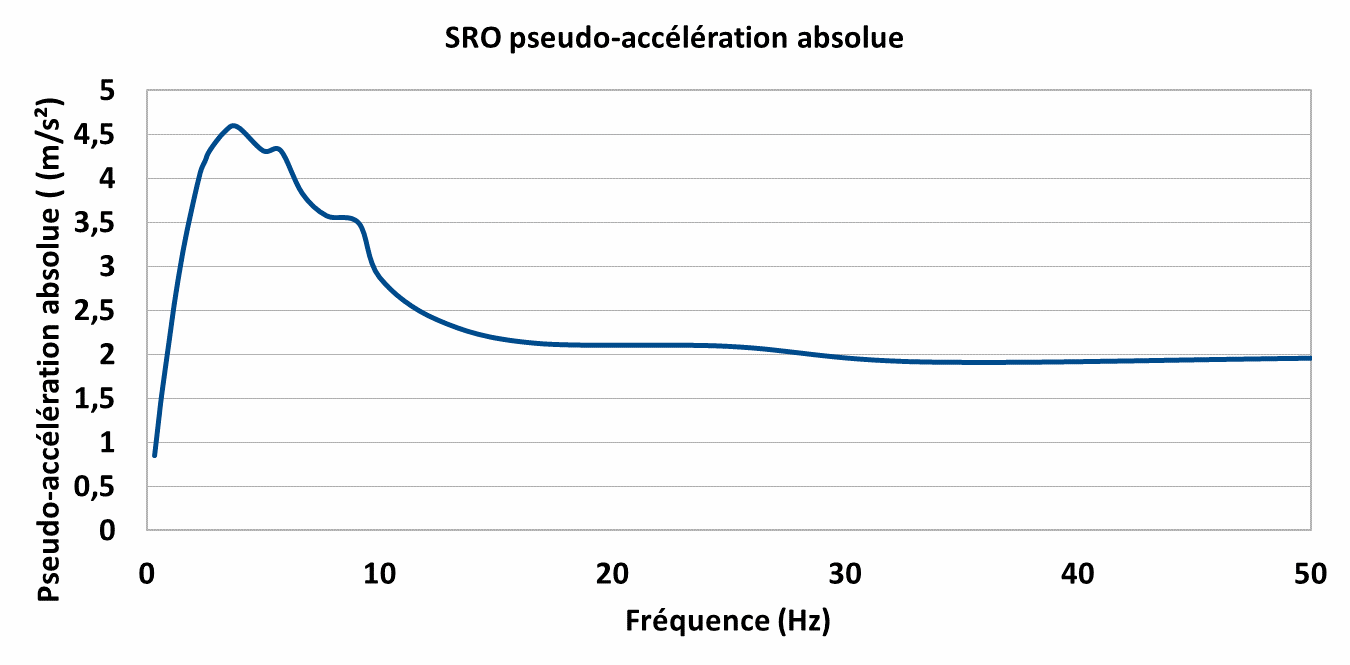1. Reference problem#
1.1. Geometry#
The geometry of the mean surface of the structure of revolution is defined by two hyperbola arcs. Dimension values are given by:
:math:`\mathrm{ra}=55.587m`
:math:`\mathrm{rb}=37.515m`
:math:`\mathrm{rc}=35.532m`
:math:`\mathrm{h1}=30.16m`
:math:`\mathrm{h2}=107.01m`
:math:`\mathrm{ep}=0.305m`
|
|
1.2. Material properties#
Isotropic homogeneous elasticity \(E=27600\mathit{MPa}\); \(\nu =0.166\); \(\rho =2244\mathit{kg}/{m}^{3}\).
1.3. Boundary conditions and loading#
Boundary conditions
Installation of the air cooler at ground level.
Loading
The air cooler is subjected to a drive excitation in the \(x\) « single-support » direction. The calculation is carried out from the speed response spectrum [Figure 1.3-a], producing the absolute pseudo-acceleration response spectrum [Figure 1.3-b]. The peak of the spectrum is at \(\mathrm{4,58077}m/{s}^{2}\) to \(\mathrm{3,88}\mathit{Hz}\). The PGA is \(\mathrm{1,95501}m/{s}^{2}\) to \(50\mathit{Hz}\). The cutoff frequency considered is \(33\mathit{Hz}\).

Figure 1.3-a: Velocity response spectrum.

Figure 1.3- b: Response spectrum in absolute pseudo-acceleration.